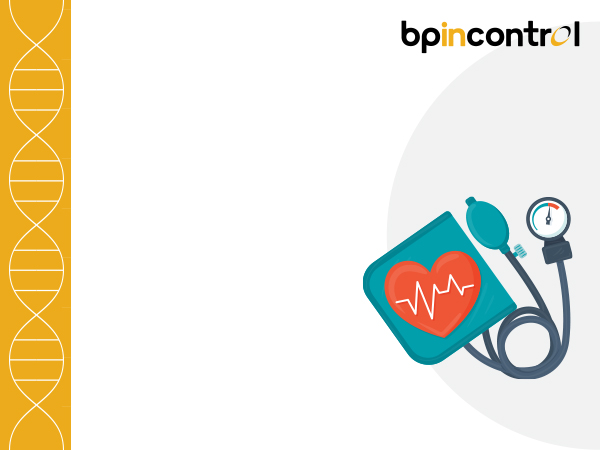Understanding Stroke Level Blood Pressure

Table of Contents
The heart is the most vital organ that tirelessly pumps oxygen-rich blood to the rest of the body. Blood pressure is a clear indicator of our health, which measures the force of blood pushing against the walls of the arteries. Your pressure is the highest when your heart beats, while pumping blood, a phenomenon known as systolic blood pressure. Your blood pressure falls when your heart is at rest between beats, which is known as diastolic blood pressure. However, any imbalance in this reading can lead to stroke level blood pressure.
When you measure your blood pressure, the normal reading is 120/80 mmHg, that is, a systolic of 120 and a diastolic of 80. This blood pressure reading does not stay the same throughout. Here are some factors that lead to fluctuations in the blood pressure levels:
- Age
- Gender (Men are more likely to develop hypertension than women)
- Family history of heart attacks
- Diabetes
- High cholesterol levels
- Excess salt intake
- Consumption of alcohol or tobacco
- Stress
- Pregnancy
- Lack of sleep or rest
- Being overweight or obese owing to a sedentary lifestyle
- Unhealthy lifestyle, which may include lack of exercise and consumption of unhealthy, processed or fried junk food
For instance, your blood pressure is high when you are involved in a physical activity or are excited, which elevates energy levels and your blood pressure is lower when you are resting or sleeping.
This normal blood pressure reading can fluctuate, leading to high blood pressure or hypertension. High blood pressure is also known as a ‘silent killer’ because it silently creeps up on individuals without showing any explicit symptoms. Stroke level blood pressure is marked by 140/90 mmHg or higher readings. Therefore, it is essential to get your blood pressure measured regularly.
Stroke level blood pressure
So, the question remains – how high blood pressure causes a stroke. Consistent high blood pressure can damage blood vessels, which overtime, become less flexible and more vulnerable to blood clot formations. If a blood clot occurs in an artery that supplies blood to the brain, it may result in an ischemic stroke, which is the most common type of stroke. High blood pressure can weaken the blood vessels to the extent of causing a rupture, which is called a hemorrhagic stroke.
What blood pressure reading puts you at an increased risk of stroke?
High blood pressure can be detrimental to your kidneys, brain, eyes, and cardiovascular health, which may cause chest pain (angina), heart attacks or stroke. If you are wondering what bp is stroke level, blood pressure readings of 160/80 mmHg are considered hypertension stage II, while 180/120 mmHg is a hypertensive crisis, which can cause strokes.
What is the difference between blood pressure and stroke?
While stroke and blood pressure levels are interconnected, they are entirely different concepts.
Blood pressure is the force of blood against your artery walls as your heart pumps blood which is circulated throughout the body.
A stroke is a sudden interruption of blood supply to the brain. A high blood pressure can result in a stroke.
Signs and symptoms of a stroke
While you cannot account for the symptoms of high blood pressure, here are some signs that may occur before a stroke:
- Fatigue
- Chest pain
- Dizziness or confusion
- Nosebleed
- Shortness of breath or breathlessness
- Severe headache
- Nausea
In much more severe cases, a hypertensive crisis may lead to:
- Kidney damage
- Eye damage
- Memory loss
- Slurred speech
- Irregular heart beat
- Pulmonary edema or fluid buildup in the lungs
Managing blood pressure to prevent stroke or recurrent stroke
It is imperative to measure your blood pressure regularly and monitor the readings to understand the pattern. Managing blood pressure and maintaining a healthy lifestyle can go a long way in preventing stroke level blood pressure.
Medical management
Consult a healthcare professional if you undergo or see anyone else going through high blood pressure stroke symptoms mentioned above. Medical professionals are most likely to suggest the following medications:
- Beta-blockers
- Diuretics
- Angiotensin converting enzyme (ACE) inhibitors
- Angiotensin II receptor blockers (ARBs)
- Calcium channel blockers
Steps to take
Aside from medicines, make essential lifestyle changes to get your health back on track and keep stroke level blood pressure at bay.
- Consume a heart-healthy diet, such as the Mediterranean diet, a plant-based diet rich in vegetables, olive oil, and omega-3 fatty acids. Reduce salt intake. You can also follow the DASH (Dietary Approaches to Stop Hypertension) diet.
- Get at least 150 minutes of exercise in a week or try working out for at least 30 to 45 minutes daily. While we all get consumed by the hustle-bustle of life, it is imperative to stay active and physically fit. Try to incorporate different forms of workout in your fitness regime, which may include aerobics, high intensity interval training exercises, weight and strength-training exercises to maintain a stable weight.
- Sit less and move around. Opt for the stairs instead of the elevator. Participate in sports and physical activities, such as dancing, swimming, jogging, or running.
- Stay hydrated and drink a lot of fluids. Avoid drinking soft drinks which may cause dehydration. However, drinking coconut water or buttermilk casts a refreshing effect and they also keep you satiated for long which can help you avoid overeating.
- Watch your portion size. Consuming meals in small plates gives a sense of fullness.
- Get at least 7-8 hours of deep sleep so you are refueled for the next day.
- Practice meditation, yoga, or pilates to keep stress at bay. Often, activities such as gardening, journaling, or painting can also help relieve stress.
- Monitor your stroke and blood pressure levels at regular intervals.
Precaution is better than cure. So, follow these preventive methods to prevent your blood pressure levels from escalating.
In A nutshell
Don’t let blood pressure affect your way of life. Be mindful of your health and take precautions timely. With technological advancements, professional healthcare has been easily accessible, which has further enabled quicker diagnosis of diseases along with proper treatment options. One such resource is BP in Control’s innovative online portal, Find a Physician.
Take the matters of your heart in your hand and stay alert and informed to lead a healthy lifestyle.
Disclaimer
The information contained in this article is to educate, spread awareness in relation to hypertension and other diseases to the public at large. The contents of this article are created and developed by BPinControl.in through its authors, which has necessary, authorisations, license, approvals, permits etc to allow usage of this articles on The Website. The views and opinions expressed in this article are views, opinions of the respective authors and are independently endorsed by doctors. Although great care has been taken in compiling and checking the information in this article, The Website shall not be responsible, or in any way liable for any errors, omissions or inaccuracies in this article whether arising from negligence or otherwise, or for any consequences arising therefrom. The content of this article is not a substitute for any medical advice. The Website shall not be held responsible or liable for any consequence arising out of reliance on the information provided in the article.


Comments (0)
No comments found.Add your comment